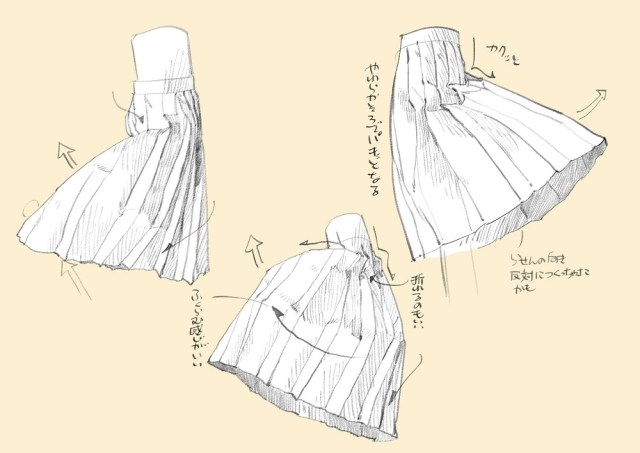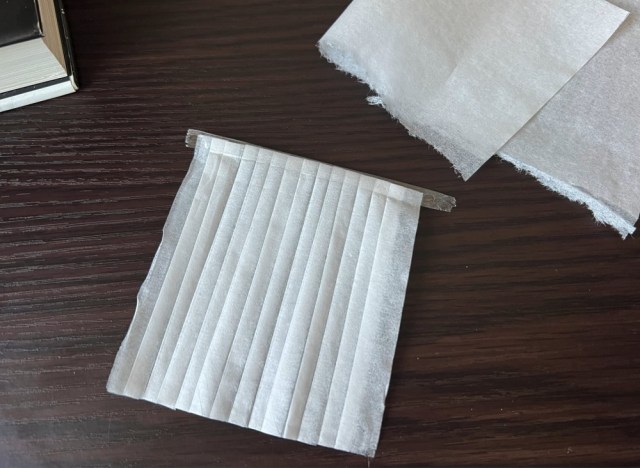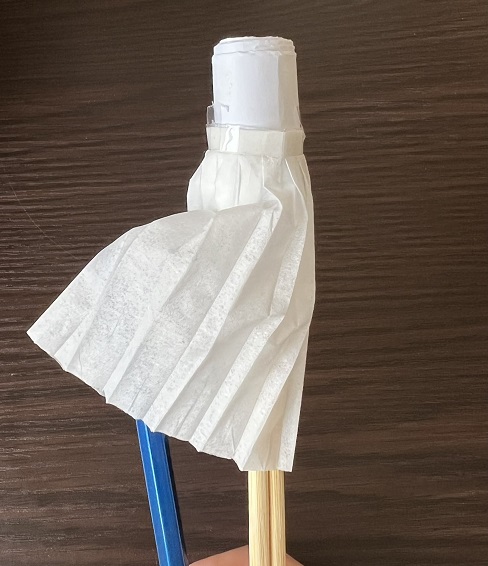
Having trouble making manga character’s pleated skirts look good? You can solve it with three things you probably have within arm’s reach.
For aspiring manga and anime artists, it’s not so much a question of if they’re going to draw a character in a skirt, but when. With so many stories having teen protagonists or school settings, it’s really only a matter of time until most illustrators find themselves crafting a scene that includes a female character wearing a skirt as part of a school uniform.
Pleated skirts aren’t necessarily easy to draw, though, since they’re actually a complex shape made up of a large number of fabric planes. Sure, if the character is standing straight up and still, all of those lines will be going in the same direction, but as soon as you’re working with more dynamic and expressive body language, or environmental factors such as dramatically blowing wind, the various folds and creases of the skirt need to start bending in their own individual ways, which can be hard to correctly envision in your mind’s eye and lead to awkward, unengaging artwork.
Thankfully, Japanese illustrator and Twitter user @simodasketch has an extremely quick and clever method to make a reference model for yourself, and all you’ll need is some tissue paper, a piece of tape, and a pair of chopsticks or a similarly sized cylinder substitute.

To start, take a piece of tissue paper and fold a series of creases. The exact number isn’t important, but you want to make sure the creases go all the way across the paper, mimicking the fabric of a pleated skirt. Once you’ve formed all the folds, take a piece of tape and attach it along the top edge.
Next, grab your chopsticks or substitute cylinder (pen, pencil, etc.) and start rolling paper around the top. Once it gets thick enough, wrap the folded tissue paper around it, and your skirt model is complete!

Ideally, you want to be able to wrap the “skirt” around the wad of paper at the top of the chopsticks (which is representing the character’s waist) without any overlap, so you can adjust the thickness of the wad or trim the skirt accordingly. It’s important to make sure the wad is noticeably thicker than the chopsticks, though, so that you can see how the skirt should billow and bend as it hangs down below the wearer’s hips. As long as you do that, all that’s left to do is to arrange the model so that it matches what you want to draw, then refer to how the tissue pleats look as you start your art’s linework.
The simple solution to a challenging illustration dilemma has other Twitter users impressed and grateful, with responses such as:
“I’ve always had so much trouble drawing skirts, to I wanna make one these right away!”
“This is going to be a huge help with a major roadblock I’ve been running into.”
“Are you a god?”
“The amazing power of tissues!”
“The model is pretty cute!”
スカートのシワが見たくてティッシュで作ってみた。 pic.twitter.com/yCKuYAYuEy
— 下田スケッチ【絵の描き方】 (@simodasketch) November 16, 2021
Theoretically, it seems like @simodasketch’s technique should work for skirts without pleats too, just as long as you don’t fold the tissue skirt before attaching it to the chopsticks, and it might even be helpful when drawing characters in kimono for historical manga, as long as you account for the reduced amount of drape compared to a skirt.
Of course, drawing characters and their costumes is only part of what goes into illustrating a scene, but this skirt model should help you get off to a good start, and if you need help keeping the background art consistent, this other clever idea might do the trick.
Source, images: Twitter/@simodasketch
● Want to hear about SoraNews24’s latest articles as soon as they’re published? Follow us on Facebook and Twitter!

No hay comentarios:
Publicar un comentario